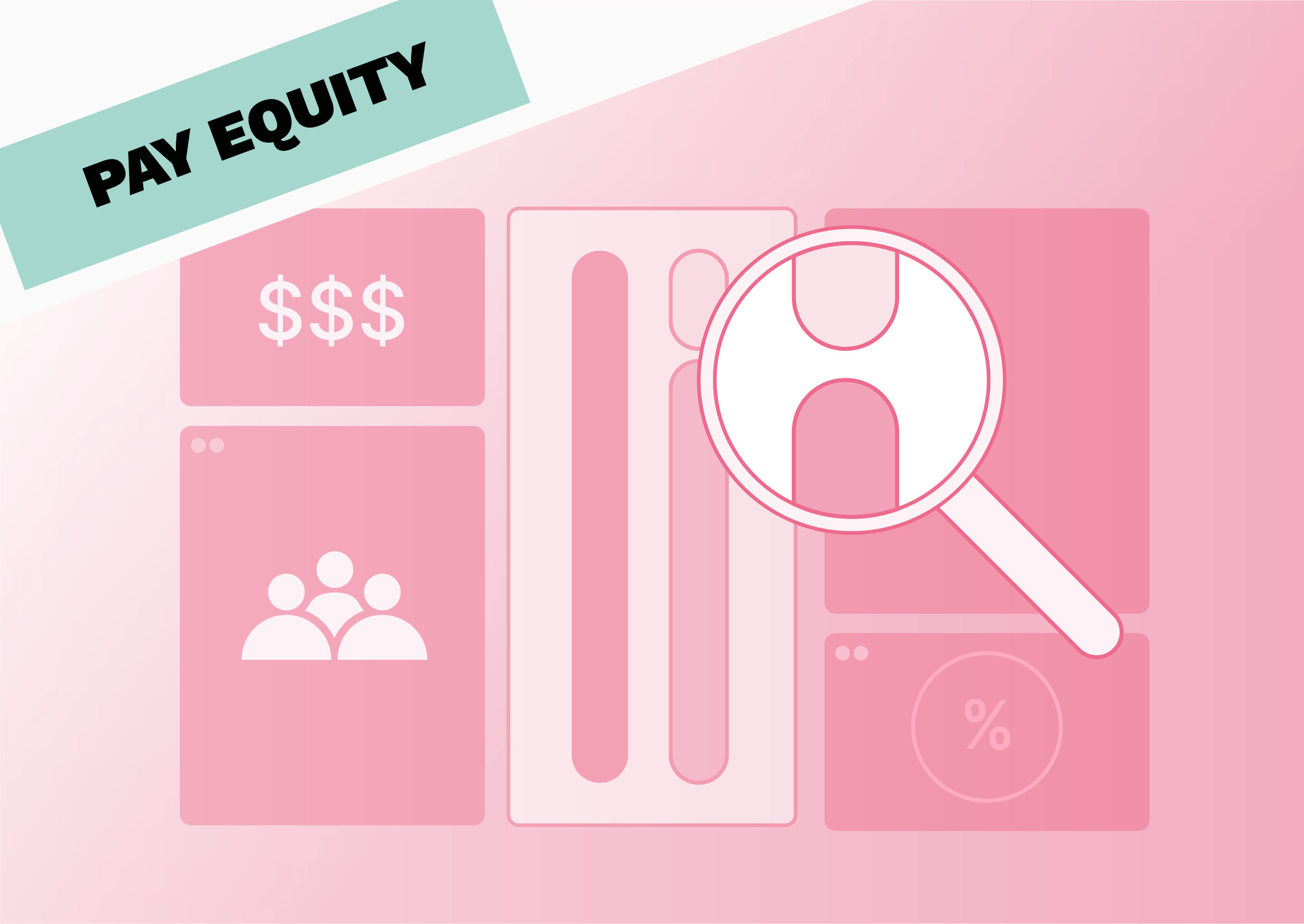Does a Gender Pay Gap really affect your company?
The gender pay gap might be closing—but not fast enough. It’s estimated that for every €1 that men earn, women only earn 84 cents. While this might not sound like a lot, it’s equivalent to two months of free work. Over time, pay inequality can lead to increased employee attrition as people leave for a company that pays their true worth.
Despite strong steps being taken toward equal pay, the Global Gender Gap Report 2022 estimates that it’s still going to take 132 years to reach true pay equality. It’s time for companies to take decisive action and create a modern salary culture that’s based on equality, not outdated practices.
In this blog, we’ll explore the damaging effects that gender pay inequality can have, before discovering seven steps to reducing the gender pay gap that every company can take.
How gender pay inequality affects your workplace
Gender pay inequality isn’t just about women receiving less money than men for completing the same tasks. It also has deeper effects that over time, can impact not only individuals but company performance too. 90% of Europeans don’t think it’s acceptable that the gender pay gap exists. If companies aren’t transparent about the steps they’re taking to reduce pay inequality, the reputation and growth of a company can be negatively impacted.
And employees talk, so even if you don’t publish your salaries openly, your team will often find out what others are earning anyway. This leads to a sharp decrease in productivity and can damage morale. Equal pay for equal work is one of the founding principles of the European Union, and employees can take legal action if they discover they’ve suffered from pay discrimination. That means it’s time to get serious about reducing the gender wage gap.
How you can reduce the gender wage gap in your company
Choosing the right policies and strategies can help accelerate the closing of the gender pay gap. Here are seven effective strategies to get you started.
1. Create gender-balanced leadership
Reducing the gender pay gap is far harder when there are no women in leadership positions. Moving toward gender-balanced leadership helps accelerate the transition toward pay equality. Globally, only 36% of companies have women in senior roles, and that needs to change. By creating opportunities for women to take on leadership roles, you can ensure gender equality across all levels of your company.
2. Introduce pay transparency in your company
If employees don’t know what their colleagues are being paid, it’s much harder for them to demand pay equality. Pay transparency levels the playing field and helps to promote a positive company culture. It’s also proven to work. When Denmark introduced pay transparency legislation in 2006, the gender pay gap decreased. Many companies choose to publish salary details within the company, while others choose to share their results with the public.
.avif)
3. Stop asking employees about their salary history
Asking for details of a candidate’s previous salary is fairly standard practice—but it should not be. Many HR departments will start salary negotiations by calculating a set increase from a previous salary. But this simply reinforces prior inequality, and it’s time to break the cycle. Instead, a fair more equitable strategy is to use a salary grid or formula to calculate wage brackets for all positions.
4. Improve the work-life balance of female employees
Women spend significantly more time carrying out unpaid work at home than men. This can create a double burden that can negatively affect their work-life balance. Conditions and policies like flexible working hours and remote work can help women reset the balance between home and work. What’s also important is to openly discuss and challenge the gender stereotypes that have led to women carrying the main burden of unpaid work in the first place.
5. Reevaluate your hiring practices
As you move towards pay equality, it’s important to consider any unconscious bias that may be entrenched within existing hiring practices. Do your job descriptions use masculine wording that could be putting women off? Or do those making hiring decisions assume that women may be better at support roles while men are suited to leadership? Examining these biases can be uncomfortable—but breaking them down helps to create a more equitable and balanced workforce.
.avif)
6. Conduct regular wage equity audits
Regular audits help to highlight discrepancies so you can take action to remedy them. Using a database with market data and salary information for other companies in your niche is a great way to see how your wage pay statistics compare to similar jobs, roles, and levels. This data makes it easier to move towards creating gender pay equality and helps attract top talent. Figures Gender Equality Index is a great way of checking your pay equality with your competitors to see if any adjustments are needed.
Moving toward an equal future
Eliminating the gender pay gap is possible. By using a range of strategies—and the right data to back these up—companies can move towards a future where equal work really does mean equal pay.
And of course, if you want access to Figures to monitor and reduce your gender pay gap, get in contact with our team today!
Looking for more resources, tools and content?
That's why we created Figures, you don't need to be a compensation expert, we are. With our an all-in-one compensation platform updated in real-time, expert HR and People insights, we want to make your job more efficient and power more fair decisions.
- Follow us on LinkedIn to never miss an update
- Learn more about the gender pay gap and best practices on our blog
- Check out our product tutorials on YouTube
.avif)





